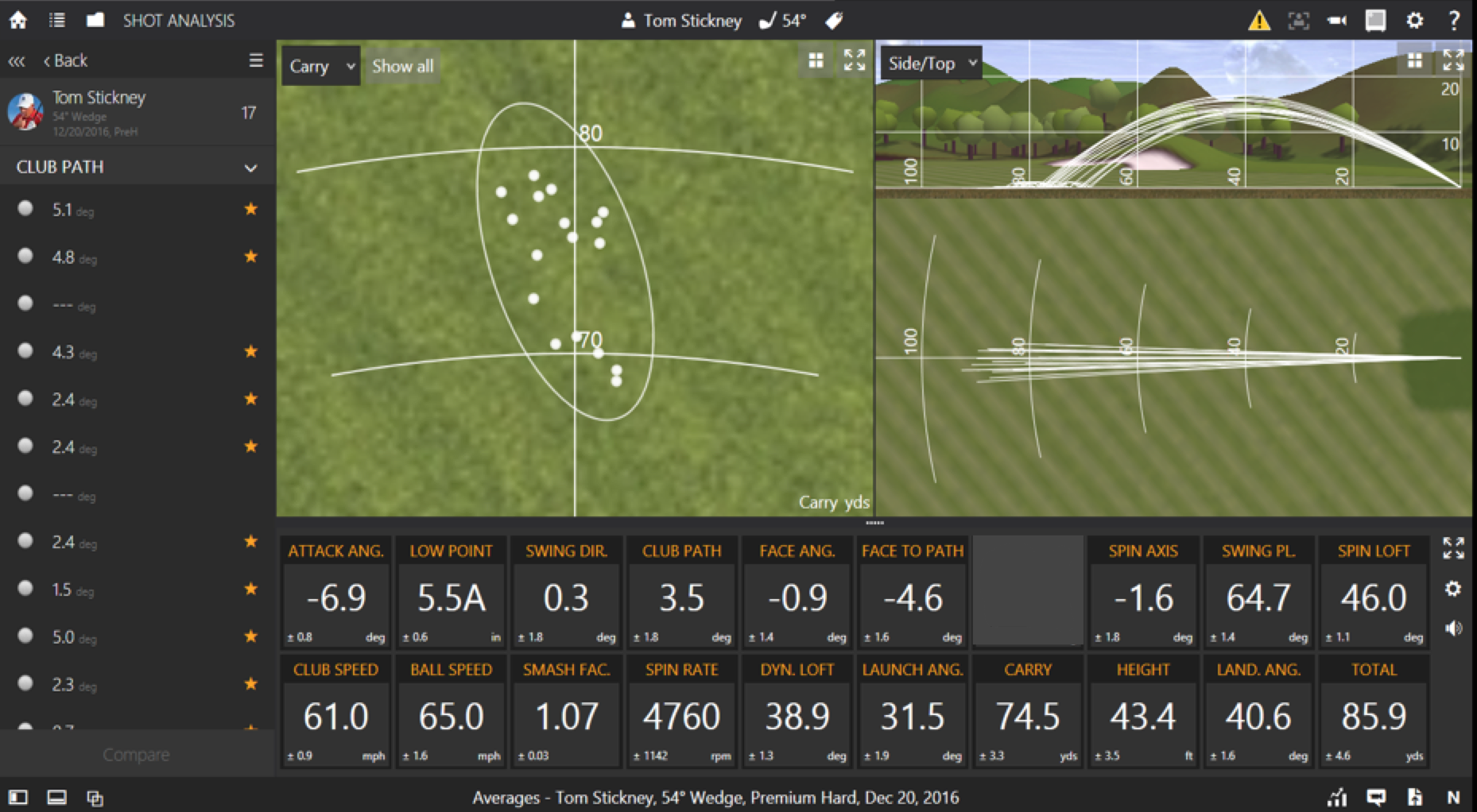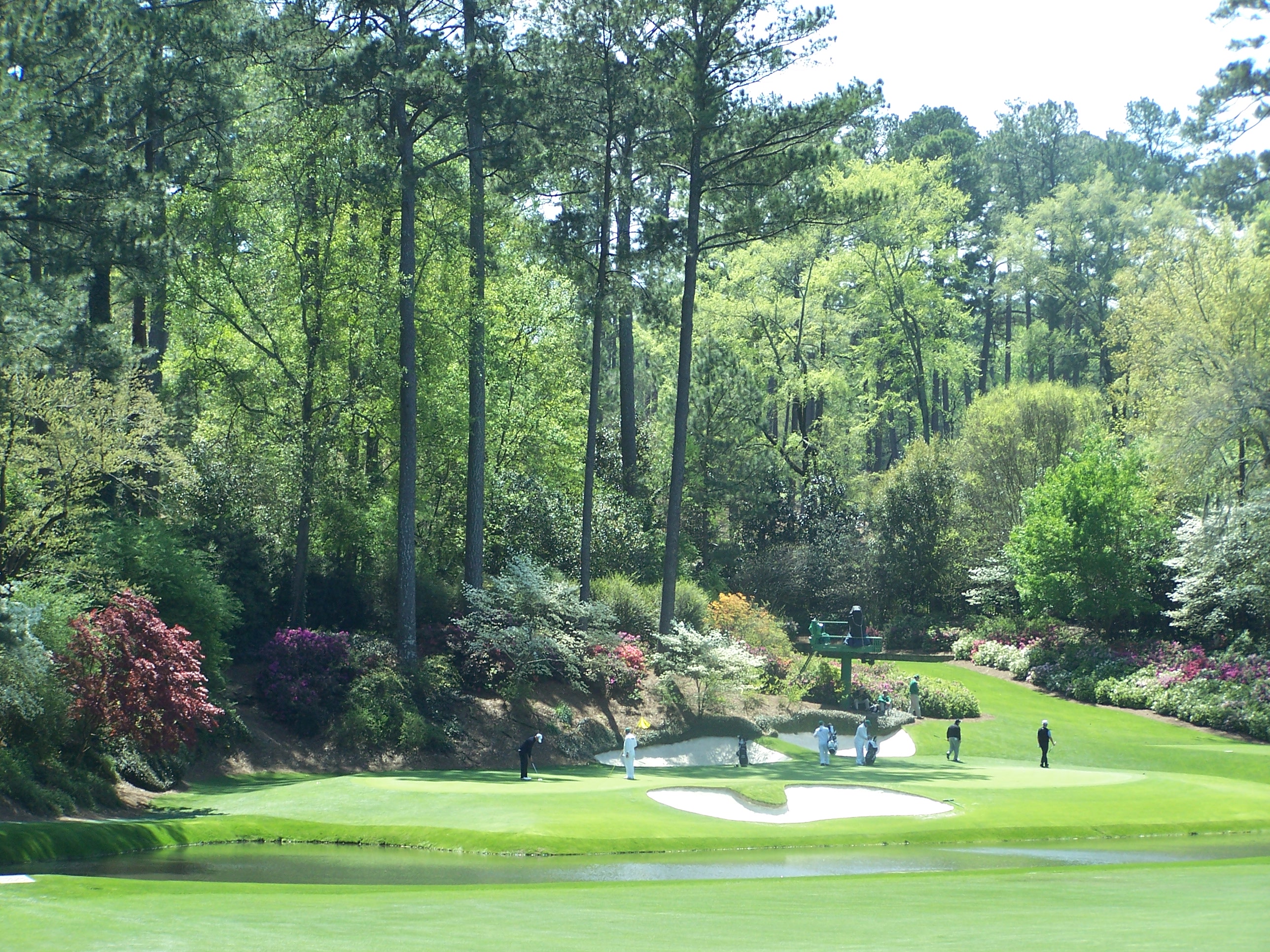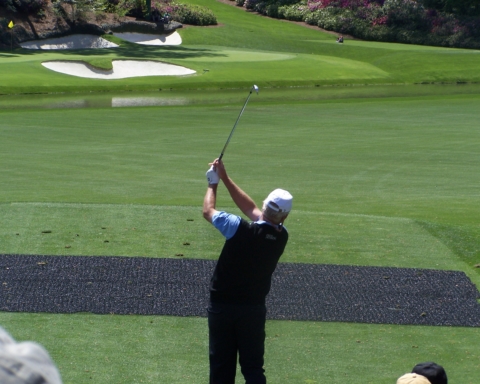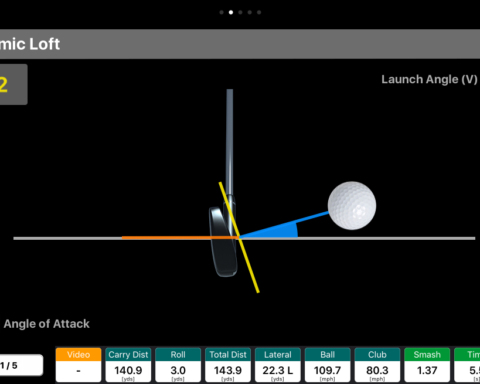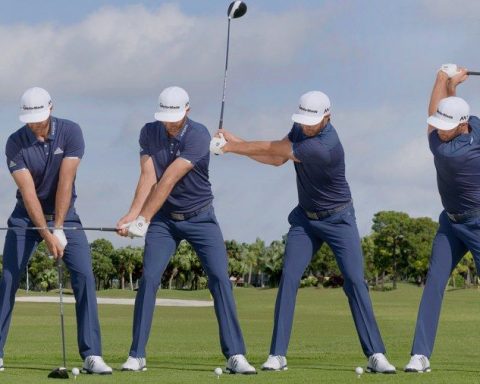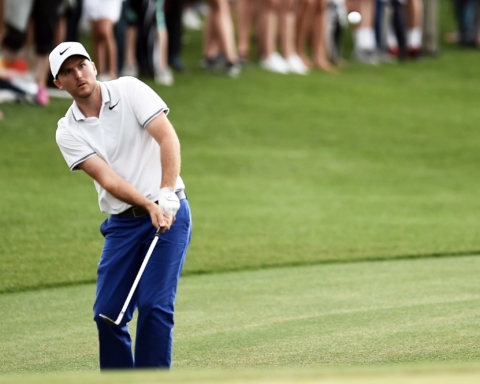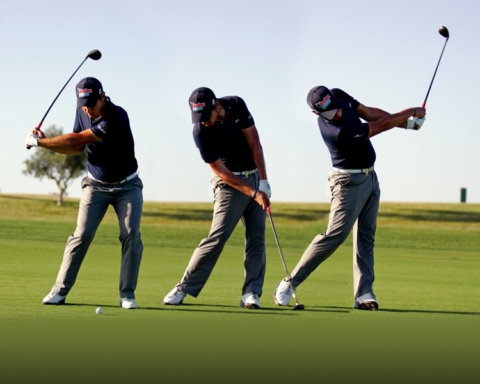The left arm is the one that primarily controls the path that the club will travel on. For this reason we need to try to keep the path from changing during the swing to produce consistent results. That means you will need to feel as if you keep the arm straight from the set up position until impact. In fact, the straighter the better.
The other major contribution the left or front arm makes is what I call golf’s dirty little secret. The way the left arm moves and rotates after impact is one of the key contributors to a great golf swing. This is the most counter intuitive motion that most golfers ever have to make and feels powerless and uncomfortable at first.
Most good players do not keep their left arms completely straight during the back swing. However, the bend they make is normally less than ten degrees. Unfortunately about 60 % of the players I work with bend the left arm more than 45 degrees at the top of the swing. When the left arm over-bends that much during the back swing it tends to create a very steep back and down swing. With a steep swing you may hit your nine iron a little further than you should, but the longer irons and woods will be very difficult for you to hit consistently. Unfortunately when you feel as if your left arm is rigid it most likely is bent about 30 degrees. It takes time and practice to develop the muscles in the shoulder just to have the strength and ability to keep the left or front arm fairly straight during the back swing.
For most players of average ability and flexibility, to keep their left arm in a good, solid straight position, the top of their swing would end with their hands at or about shoulder height! There is nothing wrong with this! A big back swing does not mean big power. It usually means just the opposite!
Since many players take the club back further, and don‘t have the flexibility to properly do so, they completely collapse and bend their left arm. This also causes forward tilting towards the target and a host of other unnecessary problems. Work in front of a mirror practicing taking the club back. Learn how far you can take the club back, while keeping your left arm virtually straight. This will be the maximum height you can achieve in a proper back swing. Like many other basic swing fundamentals when this correction is made you will again feel as if your back swing is short. Practice this in front of a mirror before you go to the driving range or golf course.
This is another one of the really boring swing fundamentals that is not fun to work on but absolutely necessary for you to reach your ultimate golfing goals.
How the left arm works at and after impact may seem inconsequential but I assure you it is not. If you slice the golf ball please read this part carefully. A person who slices can learn to hit a ball curving left within 40 minutes after learning proper use of the left arm. The typical comment during the change is how unnatural or uncomfortable it is to move your left arm correctly after impact.




The key is how the left arm moves very little forward in the down swing. As odd as it sounds the left arm moves across the chest on the back swing and barely moves towards the target on the downswing.
The left arm will stay at or around a 30 degree angle across the chest from the half way down position of the down swing and not move forward until after impact and not until the hands get around chest high on the follow through. This means that your front elbow will stay closer to your belly button than your front hip at impact and stay there until your hands reach about shoulder height. This may sound odd but this is what most of the best ball strikers in the world do.
I would estimate that only about 3 to 5 percent of golfers accomplish proper front or left arm motion which is also in line with the percentage of players that break 80. The biggest problem with this is that it feels powerless and all “bunched up” through impact. If you were to see this on video you would notice the exact opposite is the case. By keeping the left arm firmly against the chest, (tricep pressing against the center of the left peck or chest) this allows your right arm to become fully extended through impact. This motion also allows your arms to extend and rotate properly.
In a sense your left arm moves back in the back swing and feels as if it doesn’t really move forward until almost the end of the follow through. Obviously this means your body must move in an athletic manner with the hips moving towards the target to start the downswing.
Stand in front of a mirror and make small swings watching how your arms work. Keep the back of the front or left arm firmly against the chest on the down swing. Notice that your arms can rotate easier before, at and after impact. This means that you can get your right hand to face the ground when the right arm becomes horizontal after impact which is a very good thing. Then go to the range, hit balls without letting the arm come off the chest even on the follow through. This will be very difficult at first. You will feel like you’re not expending any energy and that you’re not creating enough speed to hit the ball anywhere but the opposite is the case. You will feel less energy because your body is working more efficiently which automatically produces more club head speed.
After hitting balls and seeing the ball curve left you will then need to get your lower body leading the swing not following the arms to get the ball flight straighter. This will take just a little time. This is not a onetime practice thing that just becomes a habit. You must practice this many times before it becomes a habit. You will never regret working on this after you apply and practice it but it will take a bit of time to perfect.
Remember, your arms hook the ball and your body slices the ball. To hit a ball relatively straight the arms and body sequence and speed must match up. Once you learn to curve the ball left with proper arm rotation you will then need to change the sequence of your body motion. Most amateurs have their hips facing the ball at impact. If your arms work correctly and your hips are square to the ball at impact you should hook the ball. After accomplishing a ball flight that curves left next try to get your hips to move laterally from the top of the swing and then try to get the hips 20 to 40 degrees open at impact. This may take a little time but it is well worth it. This is how a good athletic motion produces extremely long consistent shots.
Please do not underestimate how important or difficult this change is. It will take hard work and dedication but will be well worth the effort. The more committed you are to making this change the less time it will take you. You truly cannot reach your ultimate potential as a ball striker without the left arm working in the prescribed manner. Although this is difficult you will find that all great ball strikers on every tour make this motion and tour players hit the ball significantly farther and straighter than the average player.

